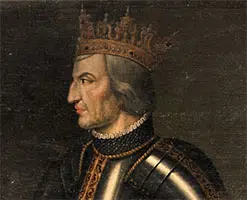 The adjective magnanimous , which has its etymological origin in the Latin word magnanĭmus , allows one to describe someone who possesses or demonstrates magnanimity . Magnanimity, meanwhile, is called kindness or benevolence .
The adjective magnanimous , which has its etymological origin in the Latin word magnanĭmus , allows one to describe someone who possesses or demonstrates magnanimity . Magnanimity, meanwhile, is called kindness or benevolence .
A magnanimous individual, thus, is altruistic, generous, and/or merciful . What characterizes a subject with these qualities is also called magnanimous.
For example: “Everyone in the town remembers my grandfather as a magnanimous man who was always willing to help others,” “The school director was magnanimous, accepted the students' apologies and avoided punishing them,” “In a “In a magnanimous act, a renowned businessman decided to donate his fortune to contribute to the reconstruction of the city that was destroyed by the earthquake.”
It can be said that magnanimity is associated with a high spirit . It is a virtue that allows one to direct one's spirit towards positive purposes or to carry out valuable actions from a moral perspective.
Magnanimous, on the other hand, is an epithet used by various nobles, princes and kings throughout history. Alfonso V of Aragon (1396-1458), king of Aragon and other regions, was known as the Magnanimous , to cite one case.
His parents were Fernando de Antequera (who was regent of Castile and later king of Aragon, when he became known as Fernando I) and the countess Leonor de Alburquerque . For this reason, she was part of the House of Aragón and the Trastámara lineage, since her grandmother was Leonor of Aragón and her grandfather, Juan I of Castile. He inherited the throne in 1412, and married the Infanta María, one of his cousins, in 1415. The following year he succeeded his father to the crown , leading several kingdoms, including Aragon.
During the Renaissance , Prince Philip I of Hesse (1504-1567), one of the most relevant of this cultural movement in Western Europe, was nicknamed the Magnanimous . His parents were William II and Anne of Mecklenburg-Schwerin. Among the most notable events of his life can be mentioned his conversion to Lutheranism and the creation of the Schmalkaldic League .
 The last Brazilian emperor, on the other hand, was Pedro II of Brazil (1825-1891), called the Magnanimous . He reigned for almost six decades and began when he was only five years old. His parents were Pedro I and María Leopoldina. It was part of the House of Berganza. His early ascension to the throne was due to his father abdicating and going to Europe.
The last Brazilian emperor, on the other hand, was Pedro II of Brazil (1825-1891), called the Magnanimous . He reigned for almost six decades and began when he was only five years old. His parents were Pedro I and María Leopoldina. It was part of the House of Berganza. His early ascension to the throne was due to his father abdicating and going to Europe.
The use of this epithet is common in different cultures . In this sense, it should be noted that it is common for the Mahatma 's title to be translated as Magnanimous . One can speak, in this framework, of Mohandas Karamchand Gandhi , popularly called Mahatma Gandhi .
As its proper name, the Magnánimo was a warship belonging to the Royal Spanish Navy, whose construction took place in the Reales Asteilleros de Esteiro, in the city of Ferrol, by Rooth , a manufacturer from Great Britain. He was ordained in 1752, as well as his eleven twins, with whom he formed the series of the Apostolate or the 12 Apostles . In 1754 it entered service with a number of guns that amounted to sixty-eight, although later it reached seventy-four.
Throughout the first years of service, the Magnánimo remained in the Ferrol squadron, a department in which its hull had to be repaired in 1758. About three years later, it began to form part of the Arsenal de la Carraca, in the province of Cádiz, where they also had to repair it because its wood had begun to rot. They left him there until mid-1762 when they took him back to Ferrol.
